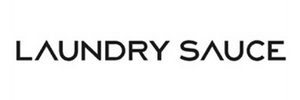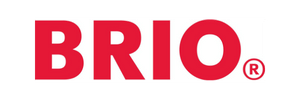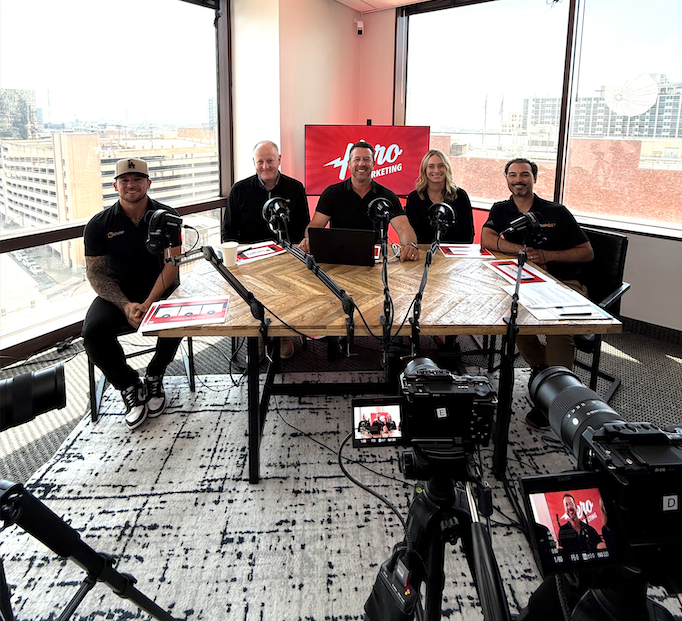Convert, Engage, Grow: How to Crush More Struggles of Marketing
At IgnitePOST, our blog’s mission is to bring new insights to the table, every week, and find new and exciting ways to educate the industry. So, we decided to go against the grain with this series and talk about the challenges of marketing, rather than successes or best-case tactics like we usually see in marketing content. If you haven’t given Part 1 of the series a read yet, go check it out - it’s great.

At IgnitePOST, our blog’s mission is to bring new insights to the table, every week, and find new and exciting ways to educate the industry. So, we decided to go against the grain with this series and talk about the challenges of marketing, rather than successes or best-case tactics like we usually see in marketing content. If you haven’t given Part 1 of the series a read yet, go check it out - it’s great.
If you have, then welcome back--this is Part 2.

BOOSTING CONVERSION RATE
You can only be financially successful if you make more than you spend. In business, this means that conversions are everything. You can only grow if you can make more than you spend, that is, if you can convert customers profitably.
This is why the struggles of many e-commerce businesses are simply different sides of the same problem: The site cannot convert customers at a high enough rate.
Our experts provided one solution to conversions that dominated over the others: Ensuring you sell with a simple, well-designed website.
WEBSITE DESIGN: CLEAN AND SIMPLE

Imagine that you’ve just seen a great ad for a new soap company. You’re sold on their funny mascot and natural ingredient list, so you click through hoping to get a good deal.
However, when you reach the landing page, the site shows descriptions for five different bathroom products rather than just soap, all crammed together in small text. You find the product menu for the soap and click it, but the page quickly disappears from view as a pop-up ad jumps out to try and collect your email address. Annoyed, you close it and look at the mid-page navigation menu for guidance. It contains 3 different CTAs and is written in Comic Sans.
Not sure about you, but I wouldn’t be buying any soap.
The most crucial element of a high conversion rate is your website. You can have a terrible product and still double your money easily if you have an amazing website. But no matter how great your product, reviews, or customer service are, a bad website will kill your business.
Our example was fairly extreme, but smaller pieces of it--like poor navigation--appear on many e-commerce sites. Harriet Chan, Co-founder and Marketing Director of CocoFinder, notes that “most potential visitors to an eCommerce site will leave a page when they can’t find what they are looking for.” Leads may also bounce when there are too many steps to follow. It makes sense. Why would anyone waste their time on your website, especially if they could just shop somewhere else?
“The more buttons or steps it takes to shop, the more likely people are to abandon their cart.
-Miklos Zoltan, CEO of Privacy Affairs
Harriet says that landing page copywriting and structure is important, not only as a means of grabbing your visitors’ attention but also as a way to guide them. She recommends clear CTA buttons and simple navigation as the first steps to overcoming a high bounce rate.

In addition, banners at the top of your website are helpful, but they can also be distracting. If you want to place an announcement up top, ensure it’s something helpful for your AOV or CAC, like a limited-time free shipping promotion or a 10% discount when you spend $100.
Overall, understand that reducing the amount of stuff on your landing page will almost always help conversions. Anatolii Ulitovskyi, the founder of SEOtools.TV, tells his clients to “remove most elements and products” from their website, rather than boosting marketing campaigns or otherwise spending more money, if they want to increase the conversion rate.
He recommends that you audit your website with Google Analytics (it’s free) to see which buttons people click often, and which buttons are essentially wasted space. If you notice that some tabs are ignored, Anatolii would put them in the footer, or remove the pages entirely. Cleaning up the user interface allows your visitors to focus solely on what’s important: finding the products they want and checking out as easily as possible.
To summarize our experts’ thoughts on site design, Steve Scott--CTO of Spreadsheet Planet--has a few questions that you should ask yourself while designing.
- Is it simple to navigate the website?
- Is the checkout process quick and straightforward?
- Are there any coupons that can be used to get a discount when customers submit a certain amount?
If you can say yes to all three, your site should be good to go.
SHIPPING FEES
How many times have you been about to buy something, but turned elsewhere after one look at the obnoxious shipping cost?
You’re not alone; 50% of customers abandon their carts because of high shipping fees.

From a small store’s perspective, it’s a struggle to offer competitive shipping rates against the likes of Amazon and Wal-Mart. But shipping costs do not bode well with today’s market. Stewart McGrenary, Director at Freedom Mobiles, says that customers are reluctant to visit sites that have a shipping cost at all, “because eCommerce behemoths like Amazon offer such enticing shipping offers” and customers don’t want to pay more if they don’t have to. He understands that no e-commerce site can eliminate shipping costs, but he suggests that you do your research and take every opportunity--partnerships, seasonal discounts, free shipping for larger orders, or anything else you can think of--to reduce the perceived cost difference between your site and the giants of the space.
Harriet Chan of CocoFinder reminds us that modern customers can have the entire internet’s market price at their fingertips--including shipping--through “pricing comparison tools” like Honey or Wikibuy. It’s always important to understand how your competitors price and what shipping rates they offer. Your customers will be privy to it, even if you are not.
PERSONALIZATION: THE FUTURE OF MARKETING
Surveying dozens of industry experts has revealed a clear path for the post-COVID marketplace: personalization and digital detoxification.
Almost 60% thought that a more personalized, individual approach to outreach will be critical for growth, and over 50% agreed that Zoom and remote work have left customers fatigued by the digital landscape. Customers nowadays are searching for something new: the convenience, quality, and variety of online shopping alongside the friendly, in-person charm of a local bakery.
“[Today’s] shoppers expect a close, if not identical, experience to that of a traditional shop. A website’s flow, segmentation, and personalization of items based on the needs of the shopper are all critical.
-Jason Mitchell, CTO of Smart Billions
Emulating a traditional shop through a website and emails alone is impossible. The digital world hinders personalization; it turns physical personalization, like a baker welcoming you with your favorite croissant, into digital personalization, the uncannily accurate ads on Facebook and unknown email senders that somehow know your name.
However, for most stores, it’s simply impractical to expand past a website and digital outreach; it’s simply too time-consuming and expensive. Not anymore.
At IgnitePOST, we saw this transition coming a mile away. The pandemic has only accelerated the process. The future of outreach lies in uniting convenience with physical charm, through personalized handwritten notes.

Handwritten notes are the only form of outreach that can truly give an online business the feeling of a friendly, local store. And with IgnitePOST, it can be done at scale in no less time than an email campaign, while giving you a 10x higher conversion rate.
Curious? Just click below and we’ll hand-write you a sample for free.
LOYALTY AND ENGAGEMENT
The next goliath one must conquer is customer loyalty. It’s arguably more important than conversions; retaining a customer is 25 times cheaper than acquiring a new one, and your most loyal customers often make up the majority of your revenue, even during aggressive growth.
Like your conversion rate, your LTV will make and break your business. 55% of the agencies who contributed to this series said that their clients need the most help with customer loyalty.
Loyalty is a different struggle for every business, but clear patterns definitely arise. Let’s dive into the best tactics our experts could think of to help you build up your LTV.

BOOST ENGAGEMENT AND SALES WILL FOLLOW
Loyalty starts and ends with engagement.
The key of creating strong loyalty is to make engaging with your brand a habit for your customers. Buying from your brand, recommending your brand, and using your products are ways customers engage with your brand.
But liking or sharing your posts, opening your emails or texts, reading your blog posts, and appreciating your handwritten letters are also ways they engage with your brand.
The key lies in using the latter--smaller, less expensive events--to grow mindshare, so that when it comes to the larger, more consequential decisions, customers habitually think of you, and choose you, first.
“The more customers who are familiar with (and trust) your brand, the higher your sales will be.
-Miklos Zoltan, CEO of Privacy Affairs
To build your brand into a habit, repetition is key. This is magnified in the digital environment, where customers are so overloaded with information and ads that they will forget you, quickly, unless you can hook their attention and keep it.
Thus, in your first interactions with potential customers, you must be prepared to put in effort. Reach out often, and provide tons of value, through free resources, product samples, advice, or anything else your market might find useful. This is the only way to get constant outreach viewed positively.
As people begin to notice you, which they will if you can provide enough value, begin stretching out your interactions to take up more time and mental space. You could take a small course, for example, and split it into 10 weeks’ worth of short emails that you send out.
“In my opinion, you’ll want to take advantage of every opportunity to increase digital interaction with your online company.
-Michael Robinson, Security Expert at Cheap SSL Security
Think of interactions like a points system - the more of them that you can get, the higher your mindshare return will be on the effort invested. Each interaction has to be meaningful enough to score points.
Score points as you sleep by nurturing independent user engagement. Interacting with other people under the umbrella of your brand is still a way to interact with your brand. This is why creating a space for people to have meaningful conversations will help loyalty; any insights and positivity in their discussions will automatically be associated with your brand name.
Variable rewards are also key to hooking customers in. Think of the daily treasure chests in free mobile games; ensure you always have something new and exciting for your customers to interact with.
No matter what you do, understand this: You must make people feel when they interact with you if you wish to gain mindshare. Angry, happy, determined--it doesn’t matter. People will still remember you so long as you never make them feel bored.
Boring your customers is guaranteed to send them packing, especially on something like social media, where the escape of boredom is an underlying goal of their presence there. It’s better to have no image at all than to bore people with a bland one.
REVIEWS AND REFERRALS
Only satisfied, repeat customers will deliver the best reviews and referrals. Hence, creating satisfied, repeat customers--through loyalty-building--will inevitably boost your standings. Over 75% of the agencies we surveyed said their clients struggled with getting reviews or referrals from their customers, so this is no small problem. You can solve it by building strong relationships.
“Be a good partner, especially when times are tough. Give them everything you have. That transparency, planning and forthrightness will be the reason you get a referral down the line.
-Matt Lally, Founder of TheGiftYak
Begin building loyalty by providing amazing customer service alongside your product. Creating perceived value far beyond the price of what you provide is the first step in building good customer relationships. You show them that you value their business.
Mike Dragan, COO of Streams.live believes that customer service provides immense value to customers. While “a customer is grateful to have bought a great product,” Mike says they will be “overjoyed when the customer service is outstanding.” Overjoyed customers are far more likely to leave glowing reviews.
The effect of strong relationships on reviews is easy to understand when you look through massive sites like Amazon. You’ll find plenty of sellers that have convinced customers to update their bad reviews, sometimes all the way to 5 stars, by providing great customer service and being willing to help solve their problems.
Appear as a friend, and you’ll be treated as one.

BUILDING YOUR BRAND: SHARING VALUES
Building loyalty and trust with your customers means that you must create a strong relationship with them. How do you build that relationship? It all starts with the strength of your brand.
Understand that a customer is not loyal to products alone, nor are they loyal to ads or discounts. The only way true loyalty forms is through shared values. Perhaps you value the environment and allow your customer to help fight climate change by buying your products. Or maybe you value providing the best solution/experience possible, and your customers value receiving it. Either way, you share values with your customers and they love it. This is the core of any brand.
Mortgage Broker Alan Harder notes that many e-commerce companies struggle because their brands “no longer reflect who they are...or resonate with their target clients.” These businesses struggle to connect with customers because as they grow, personal connections seem less important and begin to fade away.
But this quickly backfires. Once the personal connection is gone, many customers will leave, as they no longer feel the personalized charm that initially drew them to the brand. It’s as if the company flew a massive hot air balloon into the sky, then took off the hot air blower at 10,000 feet and threw it out of the balloon to lower its weight.
To resonate with your target audience, and ensure you keep the connection when you scale, share values with them. You can do this in a variety of ways. A percentage of profits could be used to fund a cause that both you and your audience value. You could also live by certain commitments within your products (honesty, fair trade, American-made) that your customers value. Or, simply prioritize providing the best experience possible--price, convenience, or product/service--and connect with customers that want to receive it.
Handwritten notes are a great first step to elevating your customer experience.
Whichever route you take, remember this: The easy way to avoid a deteriorating brand name is the simple way: keeping authenticity and customer relationships top of mind, no matter your market cap.
DIVERSIFICATION: REDUCING RISK
As a final note, Darcy Burner, CEO of Buttonsmith, warns not to put all of your energy into one product or channel. She says that her biggest challenges come from products that she puts too much effort into growing. As Buttonsmith leans more on one product, “it becomes exponentially more likely that either an Amazon bot or an unscrupulous competitor will succeed in taking [it] down.”
This doesn’t just concern Amazon listings. if your business leans too heavily on any one channel or platform for success, you open yourself up to serious risk. It’s like building a chair on one leg. It could be the world’s sturdiest leg, but you’re still better off with more.
Thus, hedging your risk across a range of products, marketing mediums, and platforms ensures that you will continue growing into the future, even if one or multiple channels fall along the way.
Every business struggles. Individual problems may come and go, but new ones will always arise, and there is nothing we can do about the presence of problems as a whole.
This sounds cynical, but think about it this way: If running a business was problem-free and success 100% guaranteed, we’d have no drive to face challenges and would never learn a thing.
The challenges of marketing and e-commerce are harsh. Face them, be grateful for them, and understand that by overcoming them, and helping more people with your business, you push us all forward.
Read more insights
-min.png)
Get expert insights for real mail campaigns
Everything you need to launch, run and scale handwritten card mail campaigns. Subscribe today!
































Ready to create your first magic moment?🚀
Start using IgnitePOST today. It's free to signup!
No contracts, no commitment and unbelievable support.
.svg)







.png)